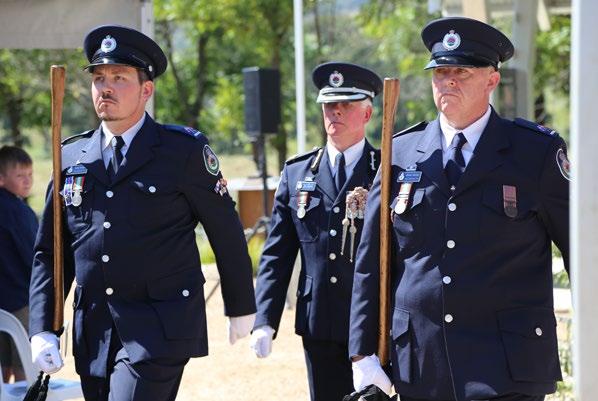
4 minute read
Taking care of our furry friends
Caring for animals both great and small has always been a passion for Bogee Brigade Captain Thomas (John) Marshall.
“I have a great love of the Australian bush and I do believe that we’ve got to do our best to look after our wildlife and environment,” says John.
During his firefighting career, which stretches back to 1965, John has regularly been involved with wildlife rescues and continues to be a licenced wildlife rescue and rehabilitator.
Over the years, he has been involved in the rescue and rehabilitation of thousands of native animals –from red-bellied black snakes to tawny frogmouths to wallabies.
“Unfortunately, there is a lot of wildlife becoming critically endangered, and I think that if I can rescue an animal and get it back to its natural environment then that’s a good thing,” says John.
“We need to make sure that we help protect our native wildlife so that our grandchildren and greatgrandchildren can actually see what they look like and know what they are.
“Look at what happened to the Tasmanian tiger for example – I don’t want that to be the same for koalas.”
At his rural property where he has nursed back to health and rehabilitated many young orphaned animals and those who have suffered injuries, John is regularly greeted by kangaroos he helped care for and released back into the wild.
However, when pushed to name a favourite, he settles on the humble wombat.

Bogee Brigade Captain Thomas (John) Marshall cares for a young native animal.
Photo by Nicole Brimelow.
“They’re a very smart animal – they’re really cute and funny and I’d call them the bulldozer of the bush,” jokes John.
John has even helped rescue animals while on duty as a firefighter. He vividly recalls responding to the Gospers Mountain fire in 2019, where several turtles came crawling out of the bush to escape the blaze.
“I saw one and thought ‘what are you doing all the way out here?’ before one of the guys called out and said there was another turtle,” says John.
“Then there were three and I think we had six to ten turtles ultimately running out of the fire. I put them all in the fire truck and we later stopped by some water to let them go.”
After an invitation from the National Parks and Wildlife Service, John’s expertise proved valuable in establishing a free online course designed to train firefighters and civilians to safely assess and rescue native animals on firegrounds.
“They saw benefit in me being there from both a firefighter’s perspective and also with my experience in native animal care,” says John.
The self-paced training course comprises three modules to help firefighters assess and report potentially injured wildlife, as well as assisting wildlife where possible under the direction of an Incident Management Team.
Following completion of the course, firefighters are provided with an interactive handbook to take with them on the fireground.
The move to offer training for firefighters arose following the 2019/20 fire season that saw many wildlife injured and killed in the destructive blazes. It’s estimated more than 1 billion native animals were killed during that season, including more than 800 million in NSW alone.
The National Parks and Wildlife Service, in partnership with Taronga Conservation Society Australia, spearheaded the creation of the course to address the NSW Bushfire Inquiry recommendation that the NSW Government develop and implement a policy for injured wildlife response, including guidance for firefighters on handling injured wildlife.
John stresses how important it is for NSW RFS firefighters to undergo training to help preserve the remaining wildlife.
“This course is the culmination of 16 months of work and it would be a great benefit to NSW RFS firefighters,” says John.
“Not only is it for their safety when coming across a wild animal – and they are a wild animal that we need to be mindful of – this course also empowers them to assess the situation and assist these animals until they can be passed on to a licenced wildlife carer.”






